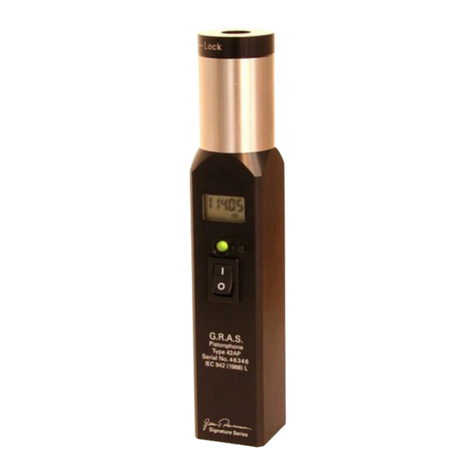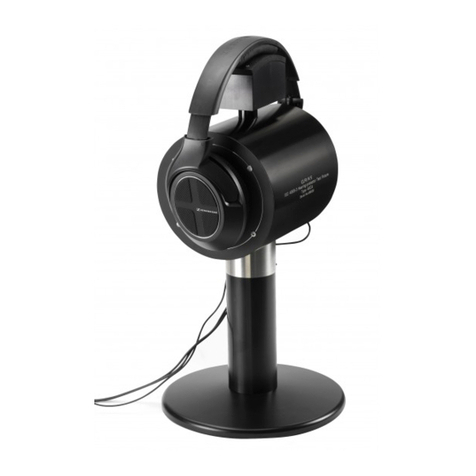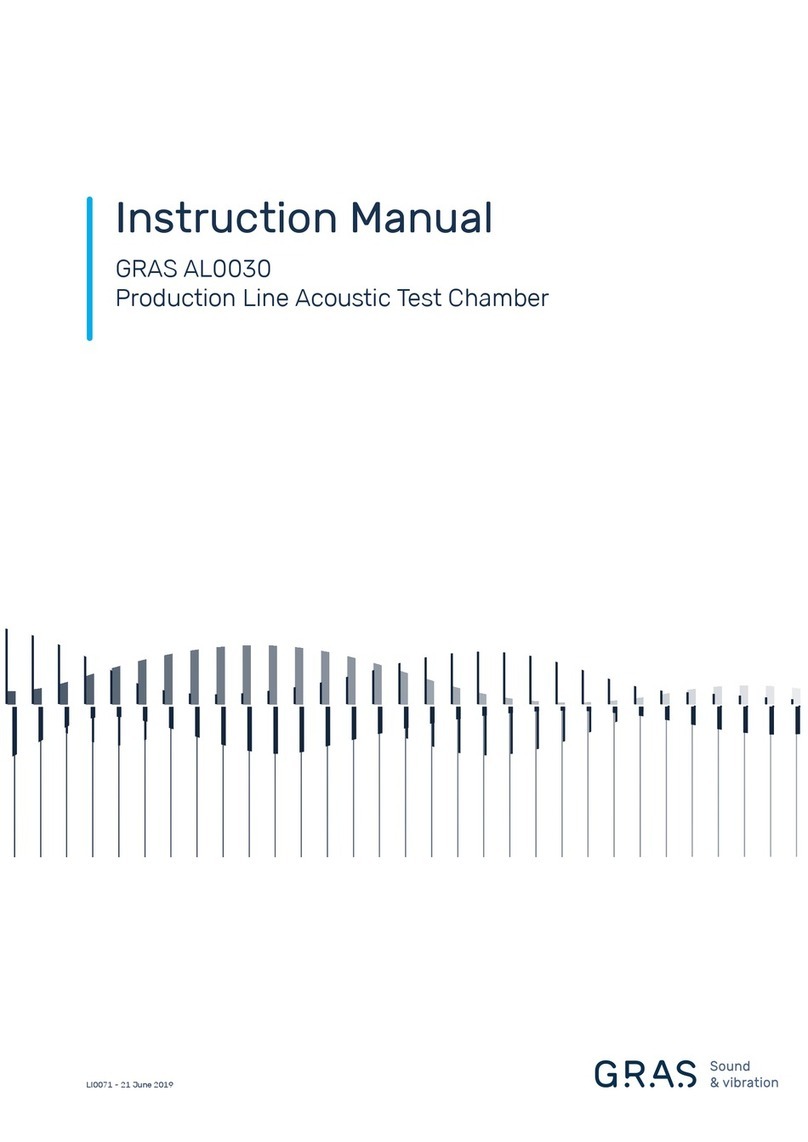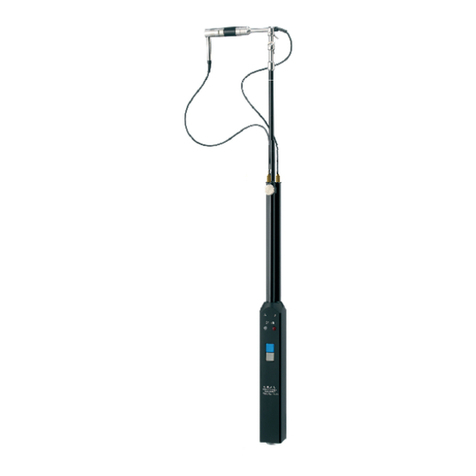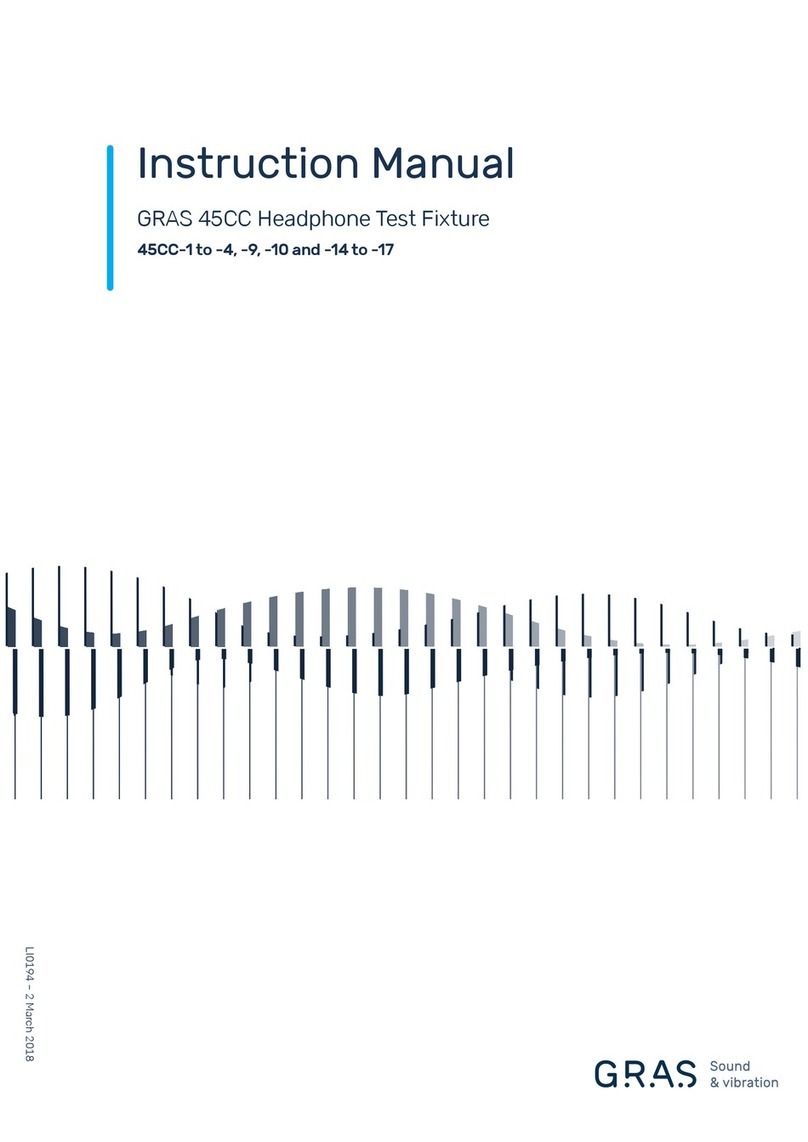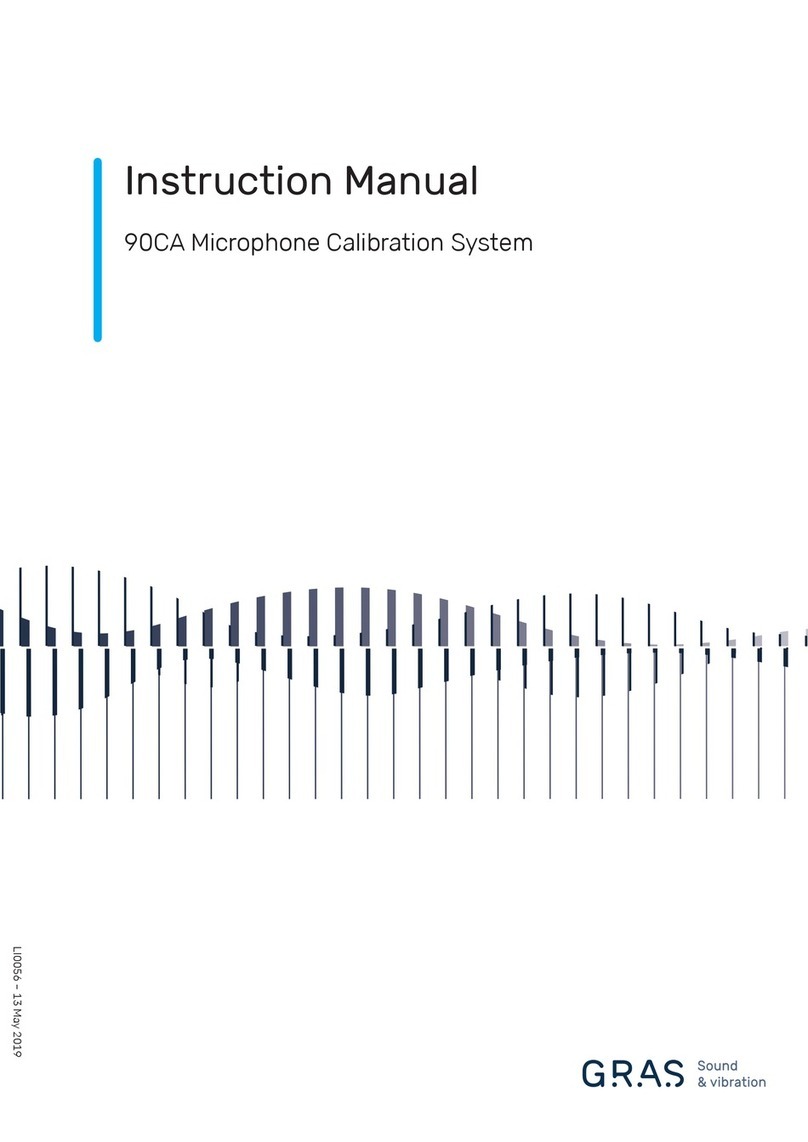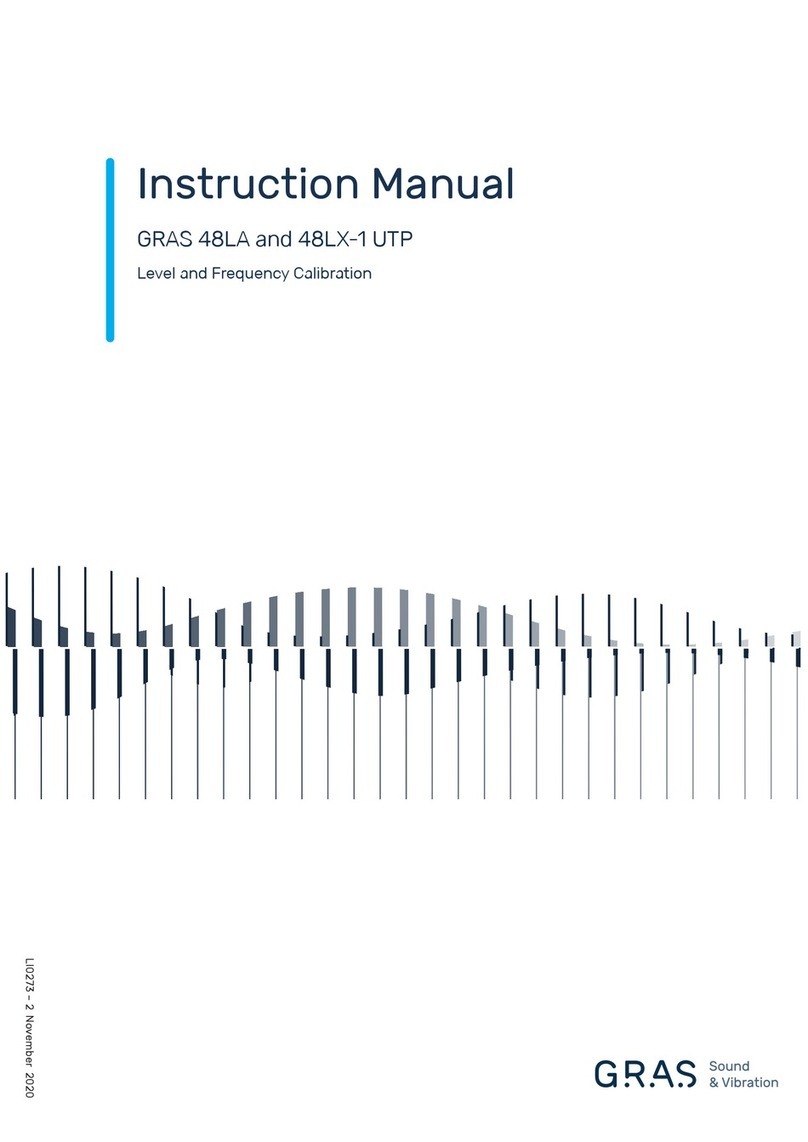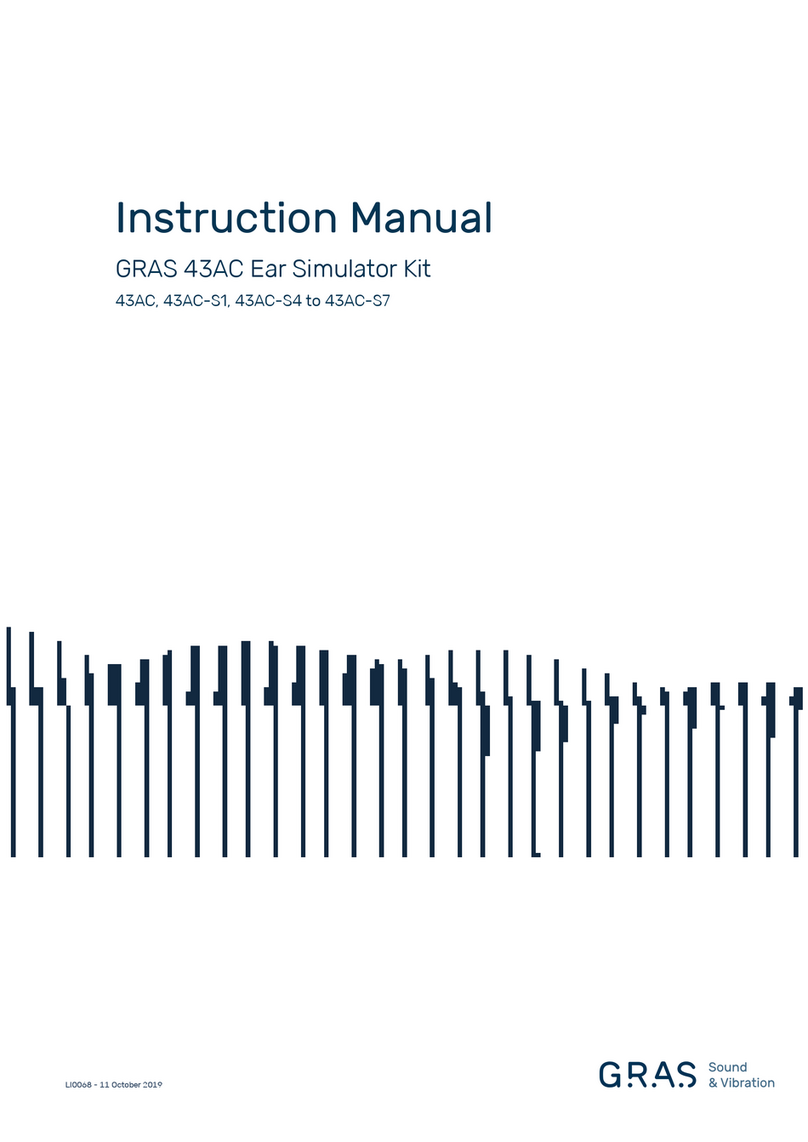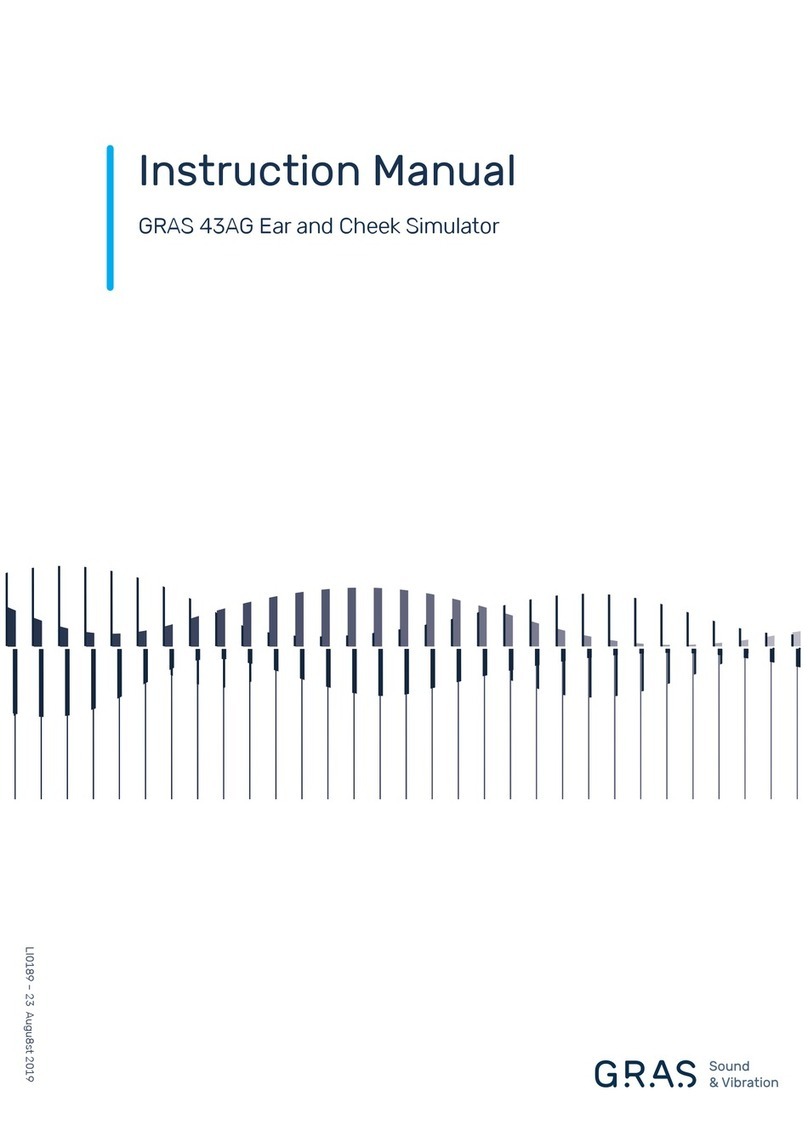
Instruction Manual 48LX-4 and 48LX-8 Line-Arrays | 4
Introduction
Proper calibration of the line array requires that each microphone is calibrated separately in a
controlled environment. For this purpose, the RA4803 calibration kit must be used. The contents
of this kit are described below.
RA4803 Sensitivity and Frequency Calibration Kit for 48LX-4 and 48LX-8
The RA403 Calibration Kit consists of the following items:
Adapter for Calibration of UTP Line Arrays
This adapter is used both for level and frequency calibration. It is mounted on the UTP line array
and serves as a receiver for the adapter for level calibration and the actuator for frequency cali-
bration. It can easily be released and glided from one microphone to the next. When mounted over
a microphone and its rubber fairing, a well-dened volume for the calibration is created.
Pistonphone Calibration Adapter and Electrostatic Actuator
The pistonphone calibration adapter consists of two pieces, the upper piece ts in the piston-
phone while the lower piece has an inner thread for securing the assembly on the pistonphone
and an outer bayonet-type ange which screws into the receptor ange of the line array adapter,
see Fig. 1, Fig. 4, and Fig. 5. The electrostatic actuator is designed to simply rest on the line array
adapter. A stop and three distance legs make proper alignment easy.
Slot for UTP line array
Electrostatic Actuator
Pistonphone Calibration Adapter
Nut with bajonet
type outer ange
Top piece with neck for
pistonphone Assembled adapter
Shoulder and backstop for
mounting on top of the line array
calibration adapter
UTP Line Array Calibration Adapter
Stops
Bajonet-type ange and recess for securing
pistonphone calibration adapter
Finger screws for securing the
adapter over the microphones
Opening for the
calibration signal
Fig. 1. The RA4803 Sensitivity and Frequency calibration kit for 48LX-4/48LX-8.

















